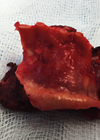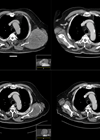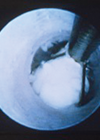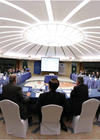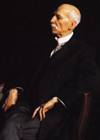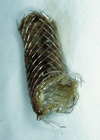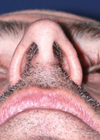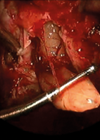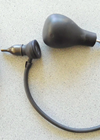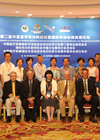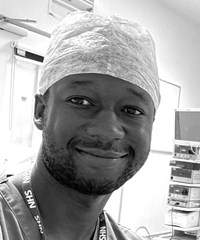ENT features archive for 2017
Surgical challenges in advanced or recurrent thyroid malignancy
The management of thyroid malignancy and extent of surgery is controversial, especially considering the limitations of preoperative diagnosis. Neil Tolley provides guidance and reminds us of our responsibility not to over-treat. In the UK, 16% of thyroidectomies are performed for...
Systemic agents in thyroid cancer
For those patients who have disseminated or unresectable thyroid cancer, Dr Arabella Hunt and Dr Kate Newbold review systemic treatments, their differences, toxicities and outcomes. Thyroid cancer is the most common endocrine malignancy. It is subdivided into differentiated (papillary, follicular...
Surgeons and swearing
We will all know colleagues who have raised the act of swearing to an art form; just as Malcolm Tucker in The Thick of It could cut a workmate in half with a well-placed swear word, surgeons can be equally...
Minimally invasive techniques for benign salivary gland obstruction
Salivary gland obstruction is a common condition – it is recognised by a complaint of intermittent meal-time swelling of the affected salivary gland and can be accompanied by recurrent infections. Imaging can identify the nature and location of an obstruction...
The role, aims and organisation of the 2017 IFOS World Congress
IFOS is a truly international organisation – indeed, its rules state that the Executive Committee must have representation from every continent. IFOS President, Chong Sun Kim, tells us more. Dear friends and colleagues, I am very pleased to welcome all...
Manuel Patricio Rodriguez Garcia (1805-1906): The ‘inventor of the laryngoscope’ and world-renowned singing teacher
Paris was the birthplace of the laryngoscope, invented by Manuel Garcia. As we are in Paris for IFOS 2017, Neil Weir tells us about this fascinating man, who travelled the world and was a renowned singer and laryngologist. Manuel Patricio...
Airway stenting in paediatric ENT
Although experience in the use of airway stents in adults is considerable, their use in children is more recent and more limited. Cláudia Schweiger and Michael J Rutter provide an overview of stents and their use in paediatric airway. Stenting...
What’s happened since the European position paper on nose and sinus tumours?
The management of malignant sinonasal tumours has gone through radical changes in recent years. Prof Valerie Lund gives us an update based on her upcoming talk at IFOS. In 2010 when we published the European position paper on ‘endoscopic management...
Rhinoplasty: state-of-the-art
Rhinoplasty surgery has evolved over the years, and Pietro Palma introduces a further new concept. When flicking through the topics of major rhinoplasty meetings, the astute observer will realise that, at present, there are two mainstream schools of rhinoplasty, which...
Rhinology: what does the future hold?
David Kennedy surveys the past, the present and the future of rhinology practice and research. An evolution of understanding in rhinology The dramatic growth of clinical and translational research within the field of rhinology in recent years is illustrated by...
ENT clinics – 50 years of progress…?
Cocaine in abundance, eustachian tube catheterisation, and the ever-present threat of a fire in the clinic… How have things changed in the last few decades? Retired ENT surgeon, Douglas MacMillan, tells us of his experiences starting out in the late...
Genetic research on hereditary hearing loss and clinical application in the Chinese population
Congenital deafness in China affects more people than the entire population of Australia. Prof Wang give us a comprehensive insight into one of the main congenital disabilities in China, looking into the causes of deafness and the benefits of genetic...


